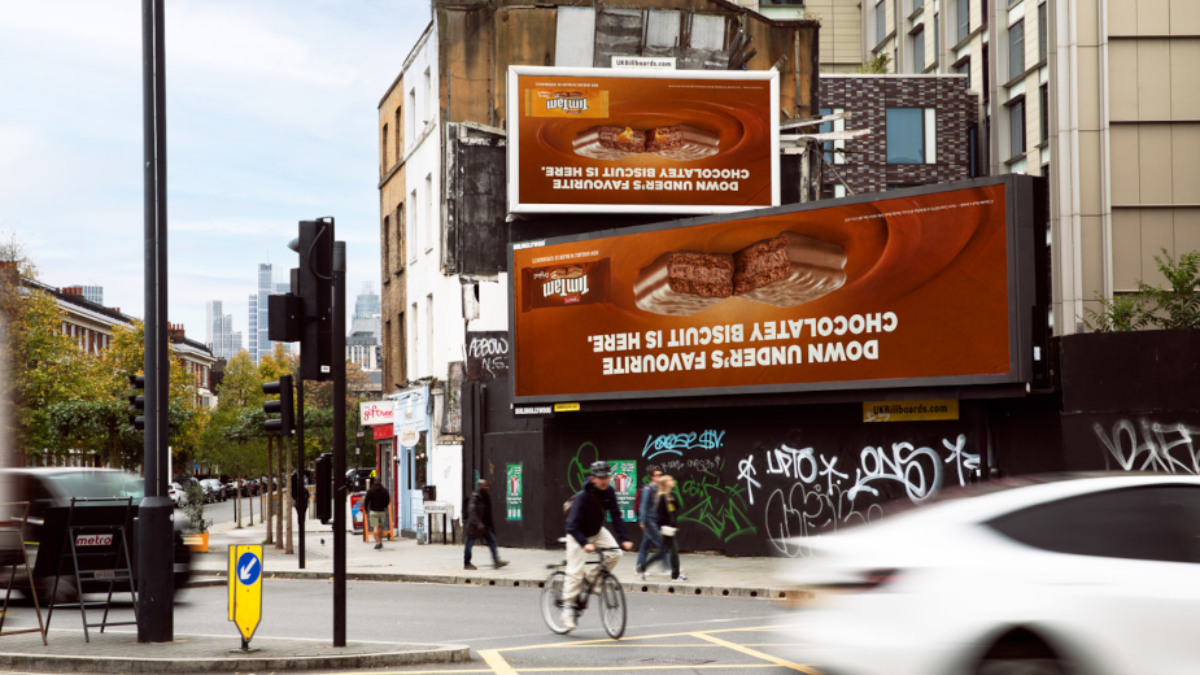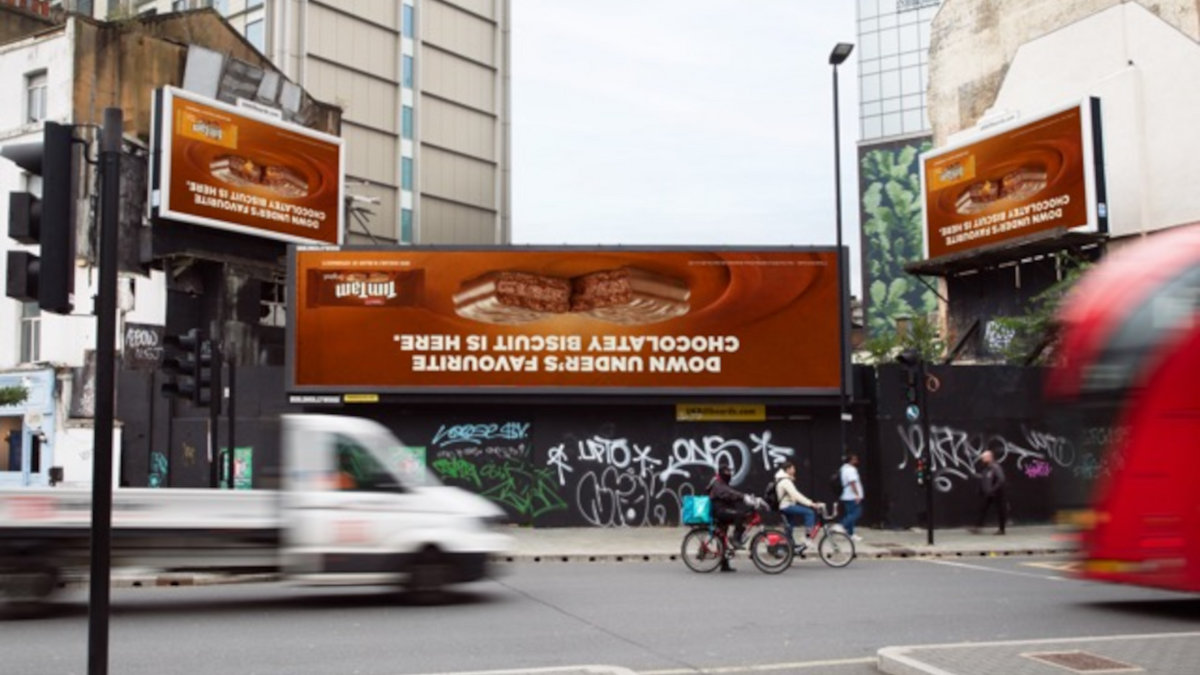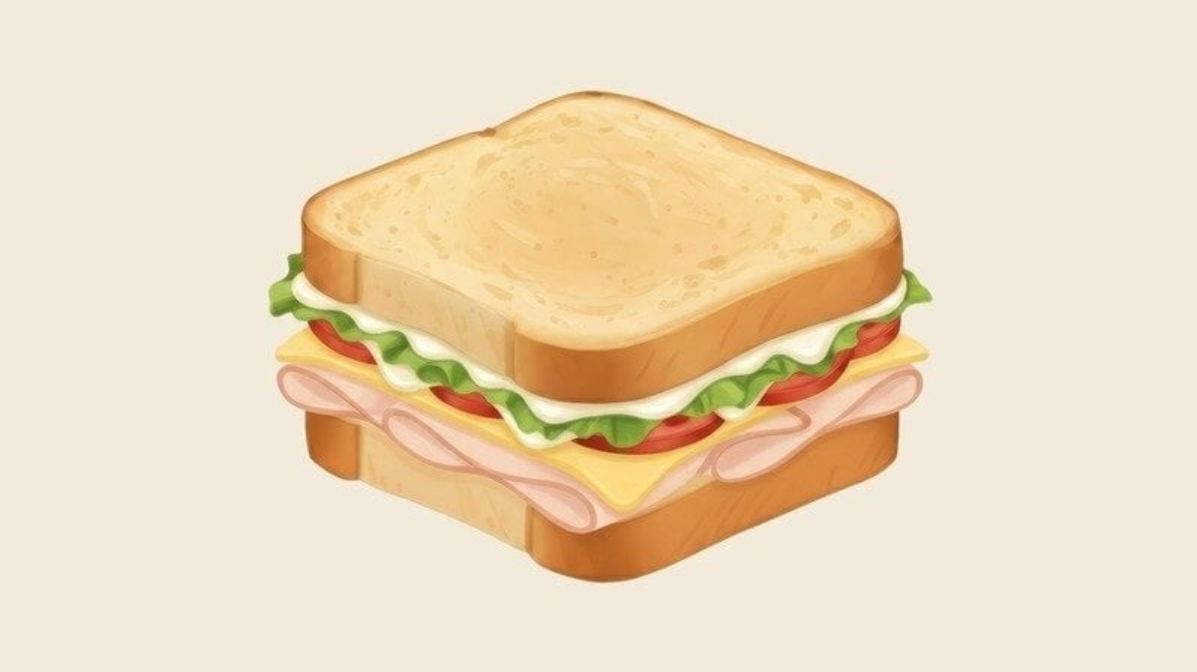Tim Tam rolled out its first UK campaign this month with an OOH push designed to grab attention in an unexpected way.
The Australian chocolate biscuit, which arrived in UK supermarkets in March 2024, has been working to raise awareness about its availability on British shelves. Research by Brand Hackers showed that while many Brits recognise the name, few realised they could actually buy it in their local supermarket.
‘We know Brits love Tim Tam,’ said Amber Dutkiewicz, market development manager for UK&I at Arnott’s, which owns the brand. ‘They’ve long been a cult favourite brought back in suitcases by Aussie friends and relatives. But many didn’t realise they’re now available in their local supermarkets.’
The campaign, created by Insiders and planned by Zenith UK, uses a simple but effective idea: billboards hung upside down. It’s a nod to the brand’s ‘down under’ heritage — something other Australian favourites like Foster’s and Vegemite have successfully used — but the thinking runs deeper than a cultural pun.

According to Insiders’ co-founder Josh Clarricoats, the creative was deliberately designed to tap into the brain’s automatic reaction to focus on something that doesn’t quite fit our expectations.
‘Creative works really hard — both boosting brand recognition through core assets, close-ups, pack shots and colours, but also playing with the idea of the orienting response,’ Clarricoats explained. ‘An upside-down billboard forces people to pause, process, and “fix” it in their minds. And then hopefully, buy a pack or two next time they’re doing their weekly shop.’
This mechanism — known in psychology as perceptual disfluency — describes how making information slightly harder to process can paradoxically make it more memorable. When the brain has to work a little, it tends to encode the message more deeply.
A 2022 study by Billy Sung, Eric Vanman and Nicole Hartley tested this effect by showing participants product descriptions written in easy-to-read and hard-to-read fonts. Those exposed to the more difficult text reported greater interest and stronger intentions to try the product.
The researchers concluded that disfluency leads people to misattribute the extra mental effort to product novelty, increasing curiosity and enhancing perceived innovation.
‘The findings demonstrate that consumers misattribute disfluency to the perceived novelty of the product, which subsequently evokes the feeling-of-interest, perception of product innovativeness, and behavioral intention,’ the authors wrote. ‘Managerially, the current research challenges the conventional and industry notion that all marketing communications should utilise easy-to-read typographies.
‘In fact, our research shows that a hard-to-read font may evoke feeling-of-interest and enhance the effectiveness of marketing communications for novel and innovative products.’
By flipping its billboards upside down, Tim Tam taps into that same principle. It’s an effective combination of brand heritage and behavioural science, part Australian wink and part cognitive hack.
‘We wanted something bold and unmistakably Aussie,’ Dutkiewicz said. ‘Insiders nailed it – the ads are cheeky, unmissable and quirky – there’s something about a five foot high close up of a Tim Tam, even upside down, that can’t help but make you want one.’
















